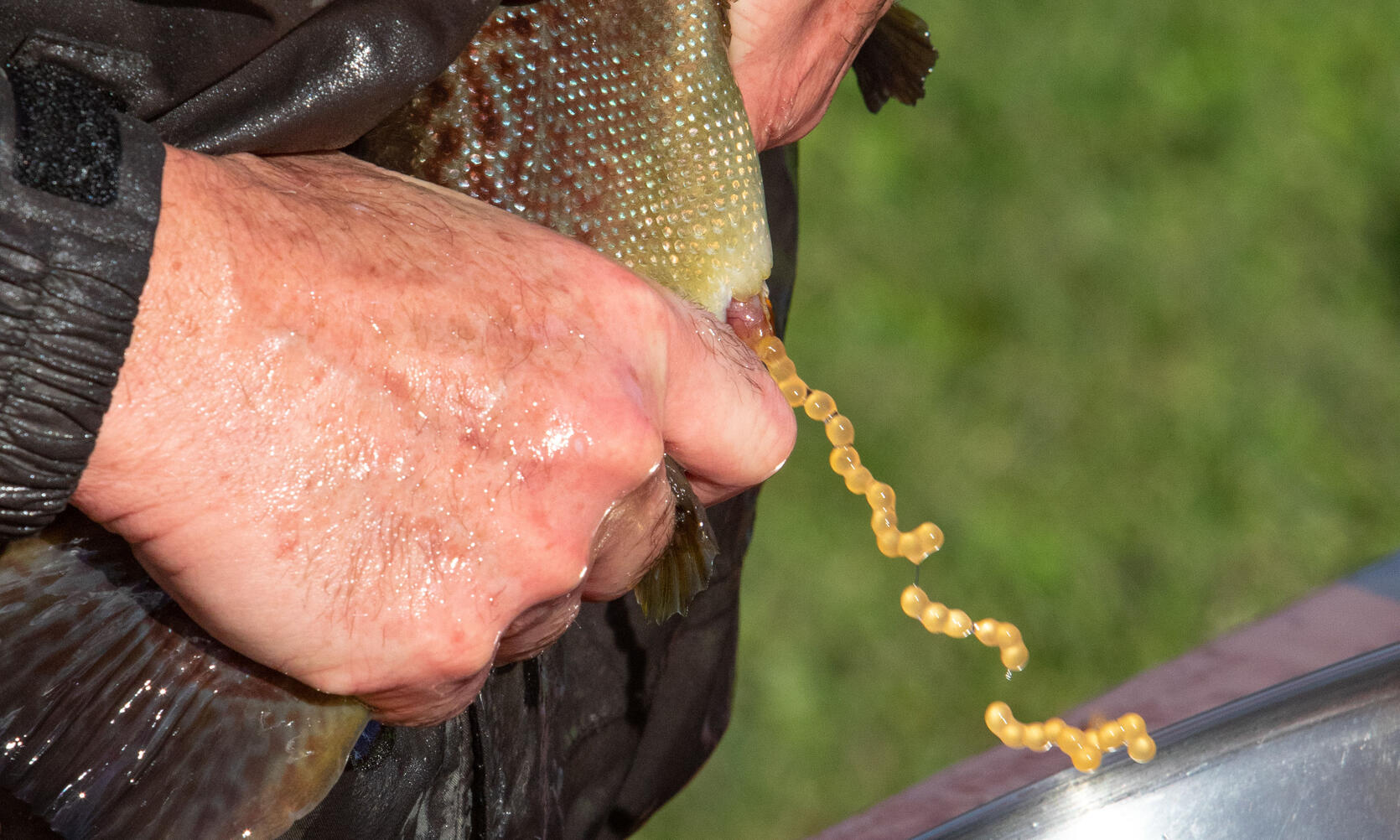- Division of Fisheries and Wildlife
Media Contact
Media Contact, MassWildlife

Video: BTS Trout Spawning
Skip this video BTS Trout Spawning.MassWildlife’s hatchery staff are busy year-round raising fish that will eventually get stocked into lakes and ponds throughout the state. It all starts with making fertilized trout eggs in a process called spawning.
On a chilly and rainy day in early November, a team of MassWildlife staff gathered at the Sandwich hatchery to start the spawning process that will create the next generation of trout. To make sure everything goes smoothly and efficiently, 6–7 people help out and each have a very specific job to do.
- The day starts with the team setting up a tent with everything they need including a table, containers, nets, towels, bowls, a large tub, and sampling equipment.
- Everyone gets to their station and the fish are put into a tub of water with a sedative to help them relax while being handled.
- Staff start by gently squeezing a female trout to release her eggs. Fish are spawned at three years old and weigh 2–5 lbs. Each female can produce 1,000–3,500 eggs per pound of body weight!
- After eggs are taken from the female, milt from the male fish is squeezed into the same bowl as the eggs. The fish are handled for as short of time as possible and returned quickly to the water to minimize stress.
- Staff add a small amount of water to the eggs and milt, and stir to activate the sperm. This encourages fertilization.
- Next, the fertilized eggs are moved indoors and undergo a process called water hardening where they are placed under cold, running water for about an hour to mimic a flowing stream. The eggs swell and change from a jelly-like consistency to the hardness of a ping pong ball.
- The next step is to disinfect the eggs using an iodine solution and place them into baskets where they remain undisturbed for the rest of the day.
After spawning, the work continues to make sure the eggs successfully hatch.
Trout timeline
- 2 days after spawning: Dead eggs, which turn white, must be manually siphoned and removed. Staff pick out any dead eggs to avoid damage to the living eggs and to prevent fungus growth. This is a very slow and extremely tedious process.
- 2 days after picking eggs: Eggs incubate for 16 days. Eggs are VERY sensitive during this time and cannot be touched.
- 16 days later: Staff check on the eggs and again remove any that have died during incubation.
- 5–7 days later: Eggs enter the “eyed-up” stage of development—two black eye dots become visible. Once they reach this stage, the eggs are less fragile and hardier.
- A few days later: The eggs will be screened again and any unhealthy eggs are discarded.
- 6 weeks later: Eggs start hatching. Hatching usually takes 3–4 days and happens between the end of December and early January.
After hatching, the fish will grow at the hatchery for 1.5–2.5 years until they reach stocking size. MassWildlife operates five fish hatcheries in the state, located in Sandwich, Belchertown, Montague, Sunderland, and Palmer. Each fall, hatchery staff manually spawn trout at Palmer and Sandwich hatcheries to produce more than 1.5 million fertile brook trout, brown trout, and tiger trout eggs.
